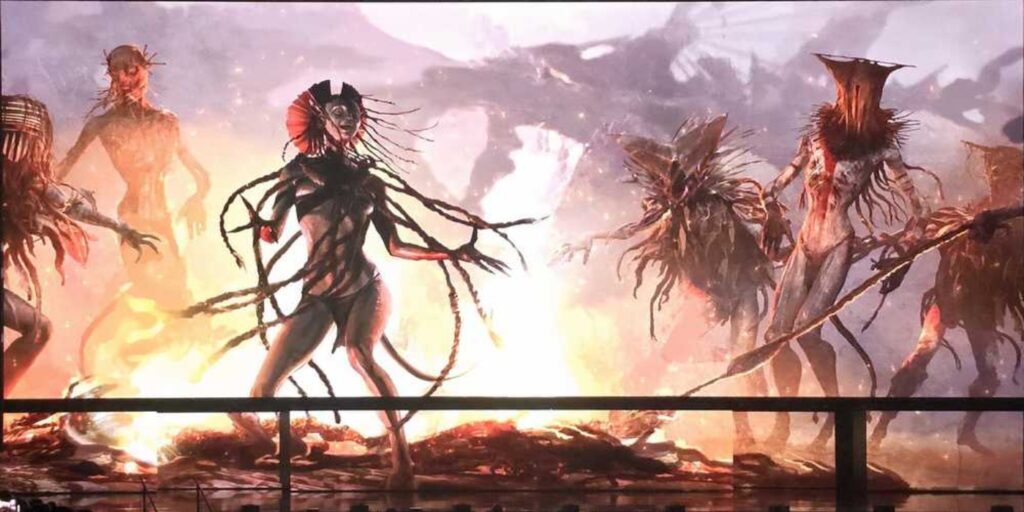James Cameron’s ‘Avatar: Fire and Ash’ is already shaping up to be one of the most visually stunning and emotionally complex entries in the franchise, and that’s largely thanks to the introduction of a fearsome new Na’vi clan: the Ash People. This faction of Na’vi will push both the heroes and the audience into uncharted emotional territory.
With their haunting appearance, mysterious culture, and morally complex leadership, the Ash People stand in stark contrast to the Na’vi clans we’ve seen before. They are a reflection of what happens when a group of people turns away from Eywa’s light out of desperation. Moreover, they are not merely antagonists; they are survivors shaped by a cruel world.
The Ash People Are A Huge Departure From Pandora’s Past

The Omatikaya taught us how to live in harmony with the forest. The Metkayina showed us the grace of the sea. Now, the Mangkwan will take us into the burning heart of Pandora. This is a place where beauty has been replaced by brutality and balanced by bitterness. Visually, the Ash People are a striking departure from their fellow Na’vi. Their skin, while still blue, has taken on a dull, grayish sheen. Warpaint is on their bodies like tribal armor. Some even wear ceremonial masks or hoods.
Related: James Cameron’s ‘Avatar: Fire And Ash’ Unveils Its Fiercest Villain Yet As Leader Of The Ash People
These aren’t the ethereal, glowing Na’vi we’ve come to admire; these are hardened warriors forged in flame. More than just their appearance, it’s their way of life that sets them apart. The Mangkwan live with a harsh understanding of the world. They don’t worship Eywa in the same way as other clans. Some, like their leader Varang, have outright rejected her. And that is perhaps the most chilling element of all, their spiritual disconnect. Fire is their symbol, their tool, their weapon.
While it’s unclear if they possess any supernatural ability to control flame, the trailer hints at at least some fire manipulation. Whether by advanced techniques, chemical concoctions, or sheer resilience, their mastery of fire marks them as the most dangerous Na’vi clan yet. Unlike the Omatikaya and Metkayina, the Ash People seem to embrace destruction as a form of power and survival. As James Cameron noted, these people “have gone through incredible hardship.” It’s all about survival, and it’s terrifyingly human.
The Trailer Hints At Varang And Quaritch Forming A Villainous Alliance Fueled by Pain

Much like how ‘Avatar: The Way of Water’ deepened our understanding of family and environmental connection, ‘Fire and Ash’ appears to be about moral grayness. Moreover, at the center of that storm are Varang and the ever-persistent Miles Quaritch. Varang, played by Oona Chaplin, is not your typical villain. She doesn’t scheme for world domination. She is a leader who is hardened, furious, and fiercely protective of her people.
In case you missed it: Why James Cameron’s ‘Avatar: Fire And Ash’ Must Succeed
Moreover, her opposition to Eywa isn’t just rebellion for rebellion’s sake. It’s a painful rejection born from disillusionment, suffering, and perhaps even abandonment. In her eyes, the gods have failed. So she takes survival into her own hands. This makes her incredibly compelling. She is a character who’s not “evil,” but morally aligned with a philosophy that clashes violently with the harmony that Jake Sully and his allies seek to preserve.
She’s a tragic mirror to Neytiri, showing what a protector becomes when love turns into rage. Then there’s Quaritch. After two films of failing to kill Jake Sully, he’s now without a purpose, estranged from the RDA, and vulnerable. ‘Fire and Ash’s trailer suggests a surprising twist: Quaritch seeks out the Ash People. He surrenders himself to them and even adopts their warpaint. It’s a move that feels desperate but logical. If he can’t win as a soldier, he’ll become something else entirely.
There’s a strange poetic irony here. The human villain of the past now finds purpose among Na’vi outcasts, using their disillusionment as a tool for his own revenge. However, with Spider still in the mix, and the ghost of his old life haunting him, Quaritch’s arc could become one of the franchise’s most nuanced explorations of identity and redemption.





